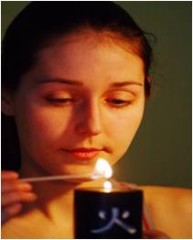 When a 30-year-old lawyer who practised karate in her spare time gave her husband a black eye while sleepwalking, she decided she should seek help.
When a 30-year-old lawyer who practised karate in her spare time gave her husband a black eye while sleepwalking, she decided she should seek help.
The Melbourne woman’s life-long sleep-walking disorder had never really perturbed her because she rarely ventured far from her bed and later had no recall of her night-time adventures.
But her husband’s slumber was disturbed most nights by her sitting up in bed and talking or getting up and moving around.
And when she lashed out at him in her sleep one night, giving him a black eye, enough was enough.
She sought treatment, concerned she might attack him again.
It was a bit embarrassing for her husband too, having to say: Oh, my wife did this accidentally, said psychologist Gerard Kennedy, a senior lecturer at Melbourne’s Victoria University.
Sleep walking is one of a range of disorders that can be helped by hypnotherapy, the Australian Society of Hypnosis’s 35th annual congress in Sydney was told recently.
Dr Kennedy told the conference the lawyer used to sleep walk three or four times a week before undergoing hypnosis.
At a four-month follow-up after four sessions of hypnotherapy, the frequency of her sleepwalking had decreased to about once a month.
“They’ll never stop completely but you can reduce the frequency to very low,” Dr Kennedy said in an interview.
The woman told health professionals she tended to experience more episodes of sleepwalking when she had been physically or mentally active before going to bed.
So if she’d played basketball, practised karate or worked late, she was more likely to sleepwalk.
Dr Kennedy, a consultant in respiratory and sleep medicine at the Austin Hospital and Monash Medical Centre, said the calming effects of hypnosis seemed to be the key to reducing the patient’s sleepwalking episodes, which usually occurred during the first stage of deep sleep.
However, the hypnosis sessions also included suggestions that if she did get out of bed, as soon as her feet touched the floor, she would wake immediately, be fully alert, return to bed and go quickly back to sleep.
Although another possible treatment would have been to give the woman sedative medication to take before bed, Dr Kennedy said she was unwilling to take drugs at that stage.
He said hypnosis was a relatively simple, non-invasive, inexpensive and effective means of treating sleepwalking disorders.
The Sydney conference was attended by doctors, dentists and other health professionals trained in hypnosis.
Psychologist Kevin McConkey, of the University of New South Wales, said wide variations existed in different people’s levels of hypnotisability.
“The person who’s more open to experience, good at focusing their attention, the person who is comfortable engaging in fantasy, that sort of person is typically more, rather than less, hypnotisable,” Professor McConkey said.
He said hypnosis was used as an adjunct in a wide range of medical and psychological settings such as helping to relieve pain in childbirth and in patients with depression, anxiety or post-traumatic stress disorder(PTSD) Patients thinking about trying hypnosis are advised to look for a qualified health professional who has been trained in hypnotherapy.
